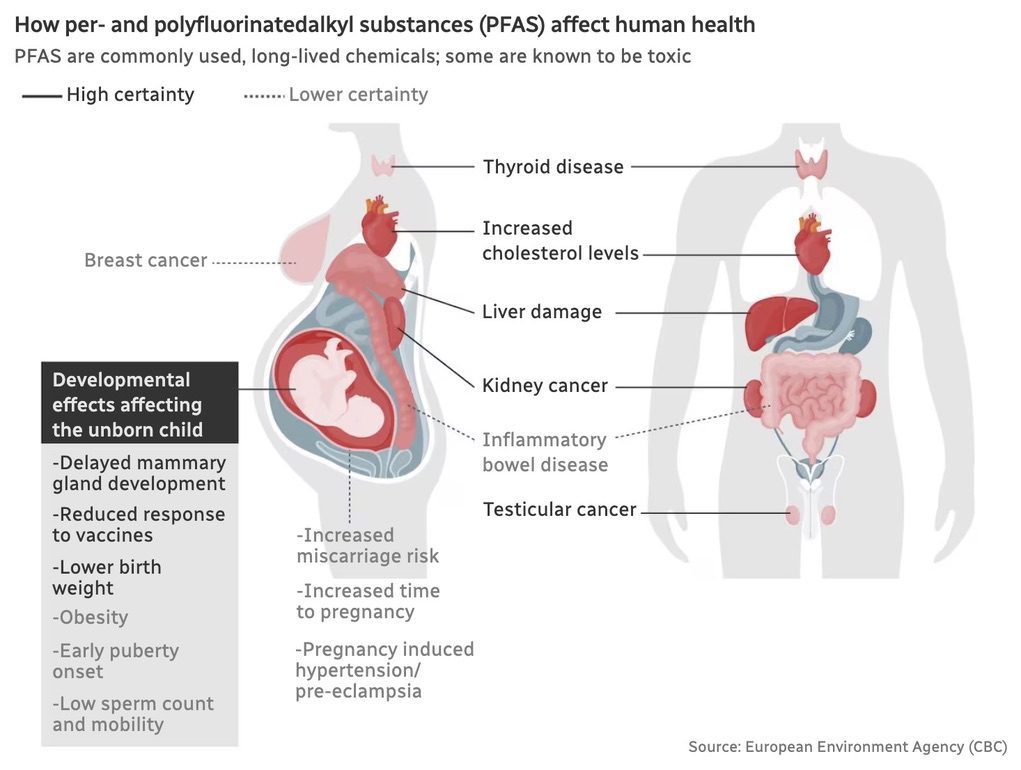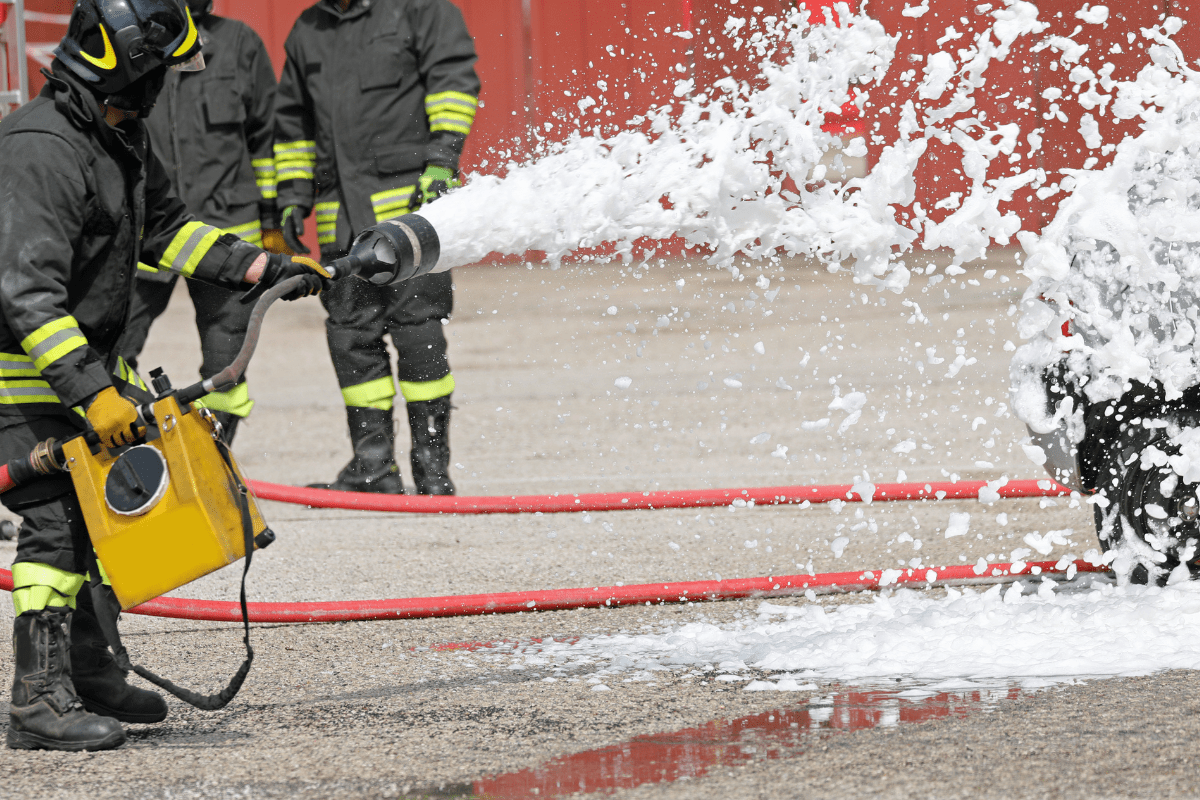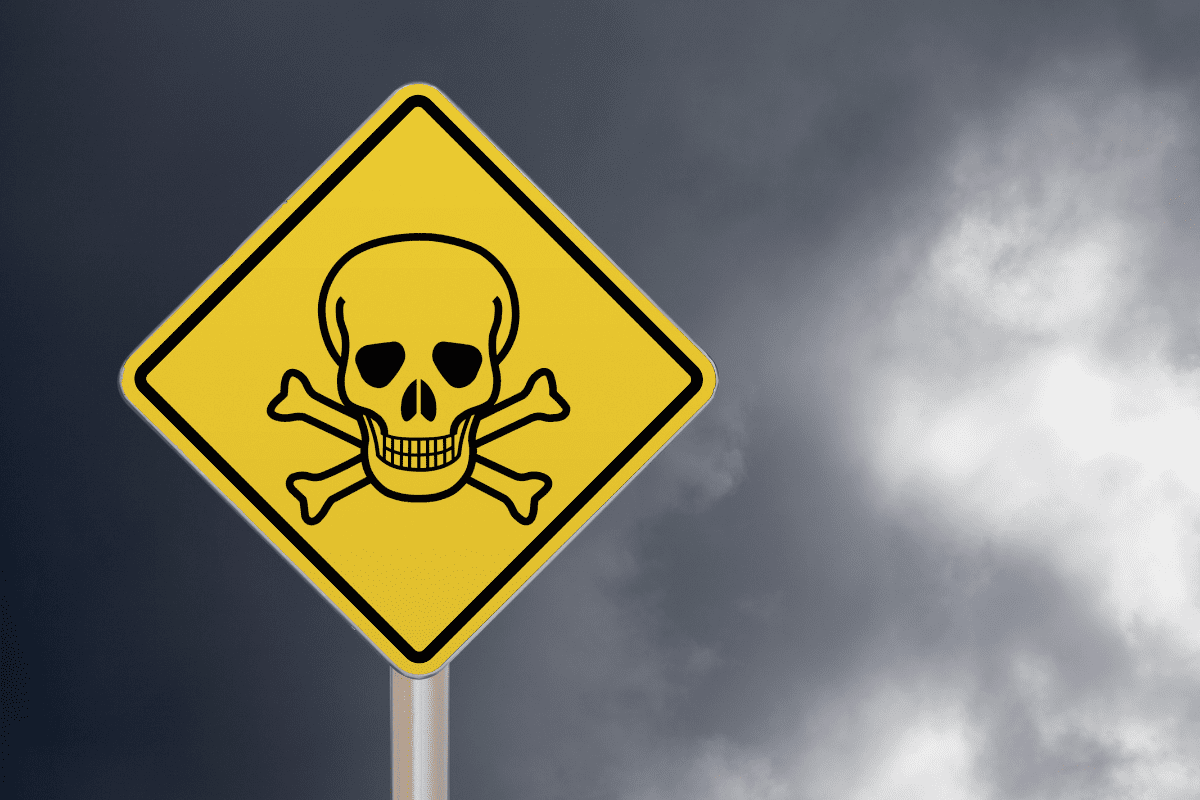Per- and polyfluoroalkyl substances (PFAS), also known as “forever chemicals,” are in our drinking water, our products, and even our bodies. It might sound like science fiction, but it’s an alarming reality.
Earlier this month, the federal government issued a draft science report on PFAS in Canada and proposed action on PFAS-laden firefighting foams. However, firefighting foams are just one of many sources of PFAS. Restricting regulatory action to this single, albeit significant, source leaves other sectors off the hook. The federal government needs to take urgent action and tackle this issue in a more comprehensive way.
Our research reports have highlighted the problem with PFAS in products and food contact materials, and the health and environmental consequences of these substances.
PFAS harms our health
PFAS have been linked to a range of adverse health outcomes, including asthma, high cholesterol, liver damage, low infant birth weight, early menopause, immune suppression, thyroid disease, and cancers, including testicular and kidney cancer. To make matters worse, exposures to environmental toxins and their effects are inequitably experienced, with racialized and low-income communities at higher risk.

The cost of human health harms resulting from PFAS exposure in Canada has been estimated at upwards of $9 billion per year.
PFAS “forever chemicals” are under-regulated and everywhere
Despite the toxicity and widespread use of PFAS, Canada’s toxics laws have not meaningfully dealt with this class of chemicals. Thousands of PFAS remain unassessed for safety, yet they are found in many products, from cookware to cosmetics and food packaging. Highly persistent, bioaccumulative and endocrine-disrupting chemicals in items used daily are creating a toxic legacy for kids and all of us. Sadly, this is just another example of the failure of our toxics laws to protect us, particularly the most vulnerable.
Due to the long-range movement of these chemicals through the ecosystem, we are seeing these substances build up in species and people at alarming levels in Northern Indigenous communities. This environmental injustice cannot continue to be left unaddressed.
Toxic exposures and environmental injustice
Lucy Grey is the public health research advisor for the Nunavik Regional Board of Health and Social Services, and as an Inuk mother, she has been pushing for action on PFAS at a national and international level. “Accessing safe and uncontaminated country food is a matter of Inuit rights. Wildlife health is directly connected to Inuit health and well-being, and it is essential to preserve resources for the next generations.”
Grey’s research partners, Dr. Amira Aker and Dr. Melanie Lemire at the Universite Laval and Centre Hospitalier Universitaire de Québec, agree that we must go further. “We especially welcome Canada’s conclusions surrounding consideration of highly exposed populations, the importance of regulating PFAS as a class rather than wasting time regulating them individually, and highlighting the importance of cumulative effects of PFAS mixtures on health.”

We need comprehensive federal action on PFAS “forever chemicals”
Other jurisdictions are leading the way in policies regulating and prohibiting PFAS. The EU has a roadmap for phasing out PFAS, and the US has stringent drinking water standards. Canada is discussing the need for action on PFAS at an international level and recently proposed municipal drinking water “objectives”. However, until the government tests, discloses, and regulates the thousands of PFAS on the Canadian market, these international commitments will do little to improve the toxic reality of PFAS contamination in Canada.
Now, more than ever, we need governments to prioritize human and environmental health, which includes taking a precautionary and holistic approach to regulating toxics. The good news is that, for the first time ever, Canada is proposing to regulate all 4000+ PFAS chemicals at the same time. However, narrowly scoping regulation to just one source means the proposed regulation still falls short of what’s needed.
If we want to stop this contamination and the health harms and injustices that accompany it, we need to cut off all the sources of PFAS.
Contact our Ministers of Environment and Health, and demand that they catch up to their European counterparts, and make sure they don’t take forever to address “forever chemicals.”










